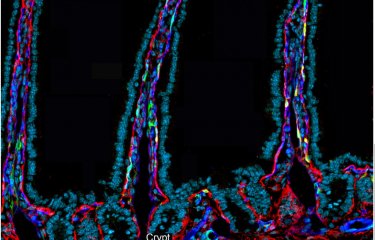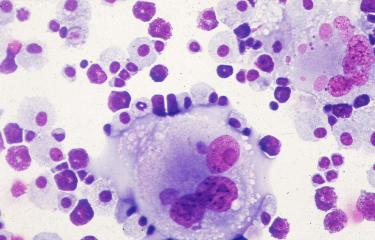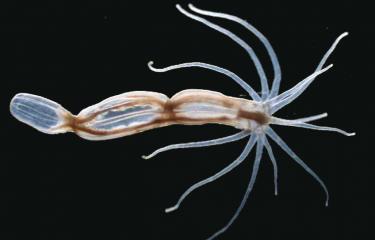It remains unclear whether and how neural stem cells (NSCs) are maintained at long-term in the vertebrate brain. Combining intravital imaging, genetic tracing in vivo and biophysical modeling in the adult zebrafish, researches from Institut Pasteur quantitatively characterized NSC dynamics during adult life. The resulting model demonstrates that NSC maintenance is a population property, where individual NSCs adjust their fate to balance the fate of other NSCs in the niche.
Neural stem cells (NSCs) are endowed with the capacity to generate new neurons in the vertebrate adult brain. These neurons are important for physiological brain growth or plasticity, or for brain repair. It remains however to be understood whether all NSCs are equal in their capacity to generate neurons at long-term, and whether these properties are pre-encoded in individual NSCs. To address these issues, we used as model the adult zebrafish brain, which hosts large populations of NSCs of similar properties as mammalian NSCs. In an interdisciplinary approach, researchers combined intravital imaging to film NSCs in their niche over several weeks, clonal genetic tracing to quantify NSC fate at long-term, and biophysical modeling, to quantitatively characterize the dynamics of adult NSCs throughout adult life. This revealed that the maintenance of the NSC population relies on its organization as a hierarchy of functionally specialized NSC subgroups, which respectively account for the growth, the self-renewal and the neurogenic activity of the whole population. They also showed that, overall, NSCs are equipotent but choose stochastically between different division modes (symmetric amplifying, asymmetric, and symmetric neurogenic). These individual choices can lead to NSC gain, maintenance or loss, but appear balanced at the population level so that a constant number of NSCs is maintained over time. This behavior, referred to as “population asymmetry”, is reminiscent of stem cells in other adult organs, such as the gut or skin. Together, this work generates the first model that comprehensively captures NSC fates at the single cell and population levels, and demonstrates that, in the adult vertebrate brain, “stemness” is not a single-cell but rather a systems property, whereby individual NSCs are plastic and adjust to fate decisions taken by other NSCs of the population. The feedback regulatory mechanisms involved in controlling this equilibrium remain to be discovered.





